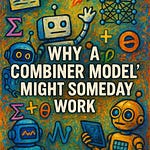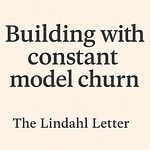Thank you for tuning in to week 209 of the Lindahl Letter publication. A new edition arrives every Friday. This week the topic under consideration for the Lindahl Letter is, “Social media stopped being social.”
Before we get going this week. I need to provide an update about last week’s post. I take full responsibility, as the principal writer here, that last week my writing efforts were just not up to par within the 208th Lindahl Letter publication. You have come to expect better from me and last week I just delivered a dud of a post. It’s the first post in a long time that actively drove people to leave the Lindahl Letter. It’s pretty easy to see the signal within the noise when something was bad enough to drive people away and I take responsibility for delivering that subpar effort.
That being noted, let’s pivot back to the main topic at hand related to social media.
I’m not sure if social media was ever really about togetherness and being social. Those are things after the fact that I want to ascribe to it. Let’s blame it on nostalgia. Communities tend to align with place, interest, or circumstance. Certainly online communities that are highly focused and targeted on a distinct community probably work. Later in a different essay it might be worth digging into the pocks of working online communities. That side of the coin however is not the focus of this missive.
Things were different back when Twitter arrived in 2006 and ultimately became popular during South by Southwest in 2007. During the initial development and discovery of these applications for social media sharing things were different and maybe that newness is now something to be nostalgic about. Social media now is fragmented and stopped being social the moment algorithms learned how to predict the things that would hold our attention better than we could possibly direct it.
What started the social media ball rolling as a digital gathering of friends slowly transformed into a system of engineered consumption. The feed no longer reflects our relationships. It reflects what the platform believes will keep us scrolling. In the process, the human layer was optimized out of existence. I am hoping the Substack experience ends up being different. Right now Substack is really my only active social media platform. It’s full of actual readers and writers for the most part. I’m trying to get into the swing of using Substack Notes, but that just seems to be an ongoing process of trying to figure it out. Previously, I tried to get into posting on Bluesky and I’ll admit that during Colorado Avalanche games it did feel like some level of community existed. Outside of gametime I just never really got much out of the Bluesky experience.
Let’s take a step back from where we are now to consider history for a moment. Things were different for the first wave adopters. The first generation of social networks were built around connection. You followed people you knew, saw what they were doing, and commented because you cared. The platforms of today are not built for connection, but instead of being factored around community they are built for amplification. The more content flows, the more data moves, and the more ads get served. The mechanics of community were replaced by the logic of engagement.
That shift changed the culture. Ultimately, it spawned the influencer movement. Maybe it’s a moment or it could be a watershed change away from public intellectuals to something else more product centric. People began curating identities instead of sharing moments. Every post became a performance. Every response was an opportunity for algorithmic reinforcement. What once felt like a conversation now feels like an audition. Social validation metrics turned communication into competition. The ultimate winners being the people who ended up making a career within this new flow of attention online.
As that dynamic took hold, the real social behavior moved into the shadows. Private group chats, invite-only communities, and niche networks quietly took over the role that public timelines once held. The visible web is now dominated by content farms and brand influencers. The meaningful conversations happen elsewhere, often out of reach of recommendation systems. What used to feel like a town square has become a noisy digital strip mall.
Social networks have become media networks. In some ways they are just the next generation of broadcast television or radio. It’s just more targeted and in some ways a lot more divisive. They are not spaces for dialogue but for distribution. Every interaction is mediated through a system that values attention over authenticity. That is why the average user now feels less connected than ever, even as they scroll through an endless feed of “content.” The core function of social media has inverted. It no longer connects people directly instead connecting people to platforms.
We may be entering a post-social era online. Connection is returning to smaller spaces: group chats, email lists, federated platforms, and direct exchanges. The large-scale, public-facing feed is collapsing under the weight of its own incentives. Maybe that’s the natural end of a system built on attention rather than empathy. What comes next may not look like social media at all. It might look more like correspondence. The strange part is that most users know this. We can feel the shift. We see fewer updates from friends, fewer real conversations, and more noise disguised as engagement. The feedback loop is obvious, but breaking free from it is hard. Every design choice keeps us tethered to the cycle. The system runs on our participation, but not our connection.
What’s next for the Lindahl Letter? New editions arrive every Friday. If you are still listening at this point and enjoyed this content, then please take a moment and share it with a friend. If you are new to the Lindahl Letter, then please consider subscribing. Make sure to stay curious, stay informed, and enjoy the week ahead!
Links I’m sharing this week!
White, M. (2025, October 17). Anatomy of a crypto meltdown. Citation Needed. Retrieved from https://www.citationneeded.news/anatomy-of-a-crypto-meltdown/
The Vergecast. (2024, October 17). AI can’t even turn on the lights | The Vergecast [Video].
SearchParty. (2024, April 12). The big flaw in Trump’s AI plan [Video]. YouTube.
Nathan Labenz & Erik Torenberg. (2024, March 8). Is AI slowing down? Nathan Labenz on GPT-5, progress and predictions [Video]. YouTube.










